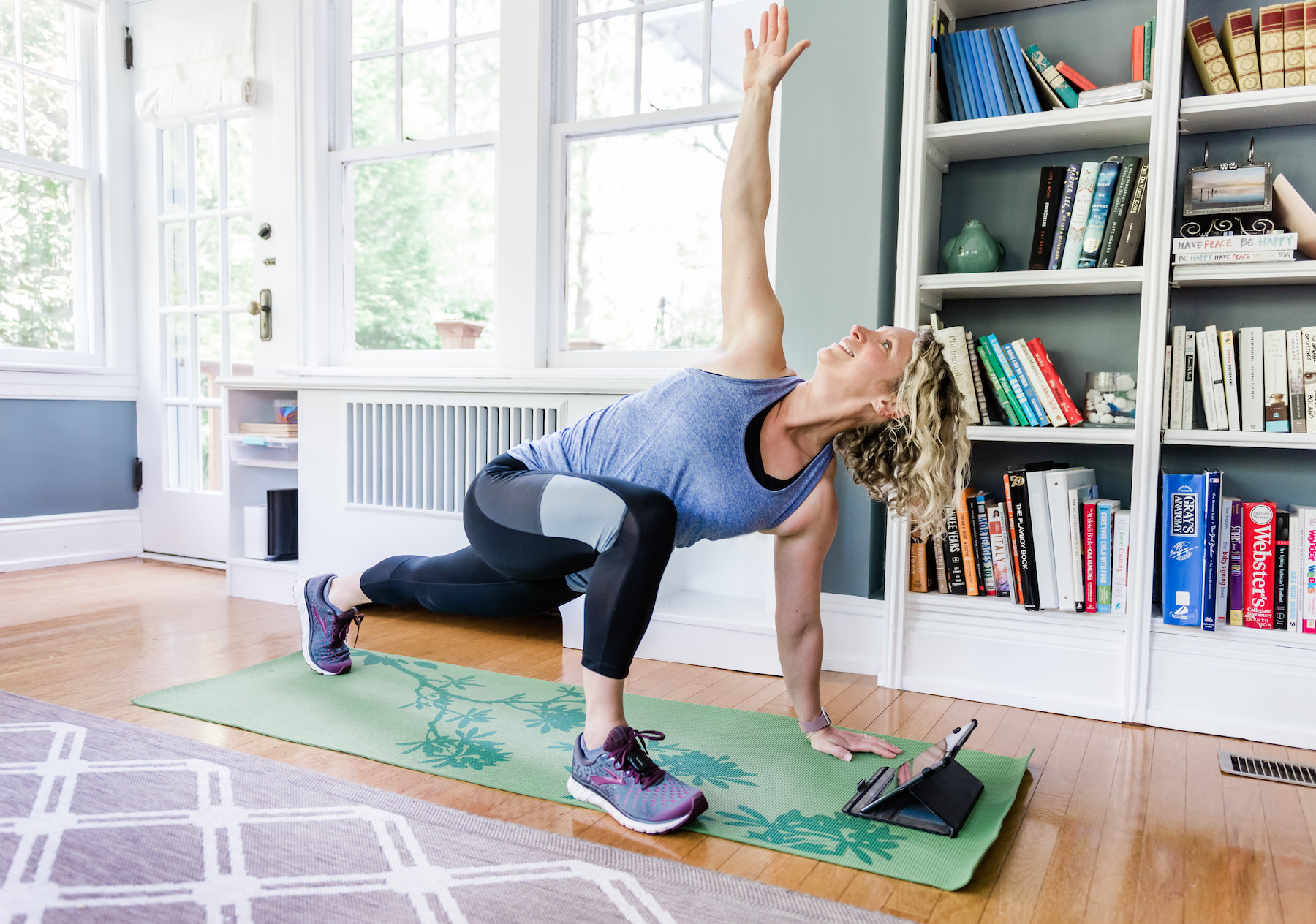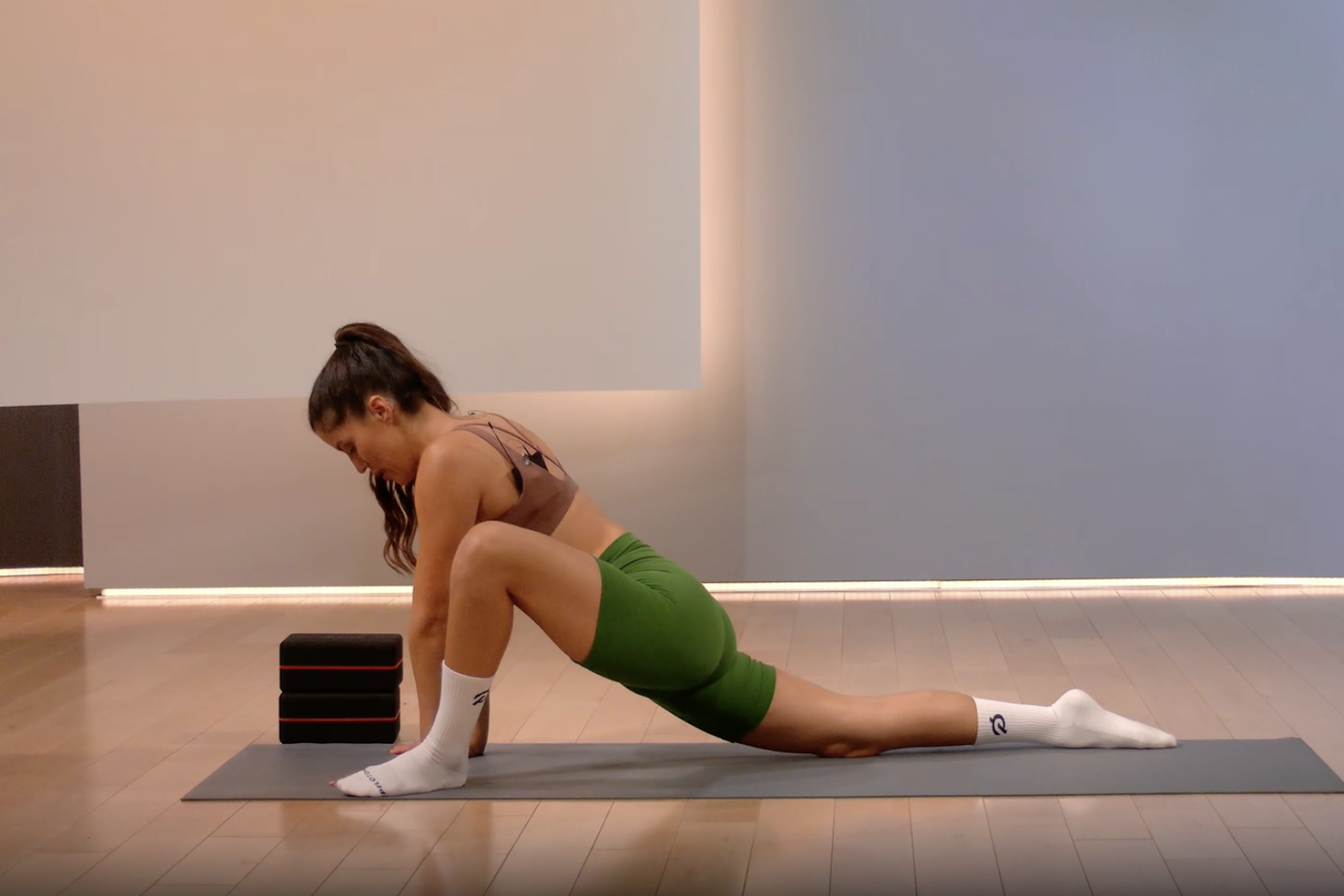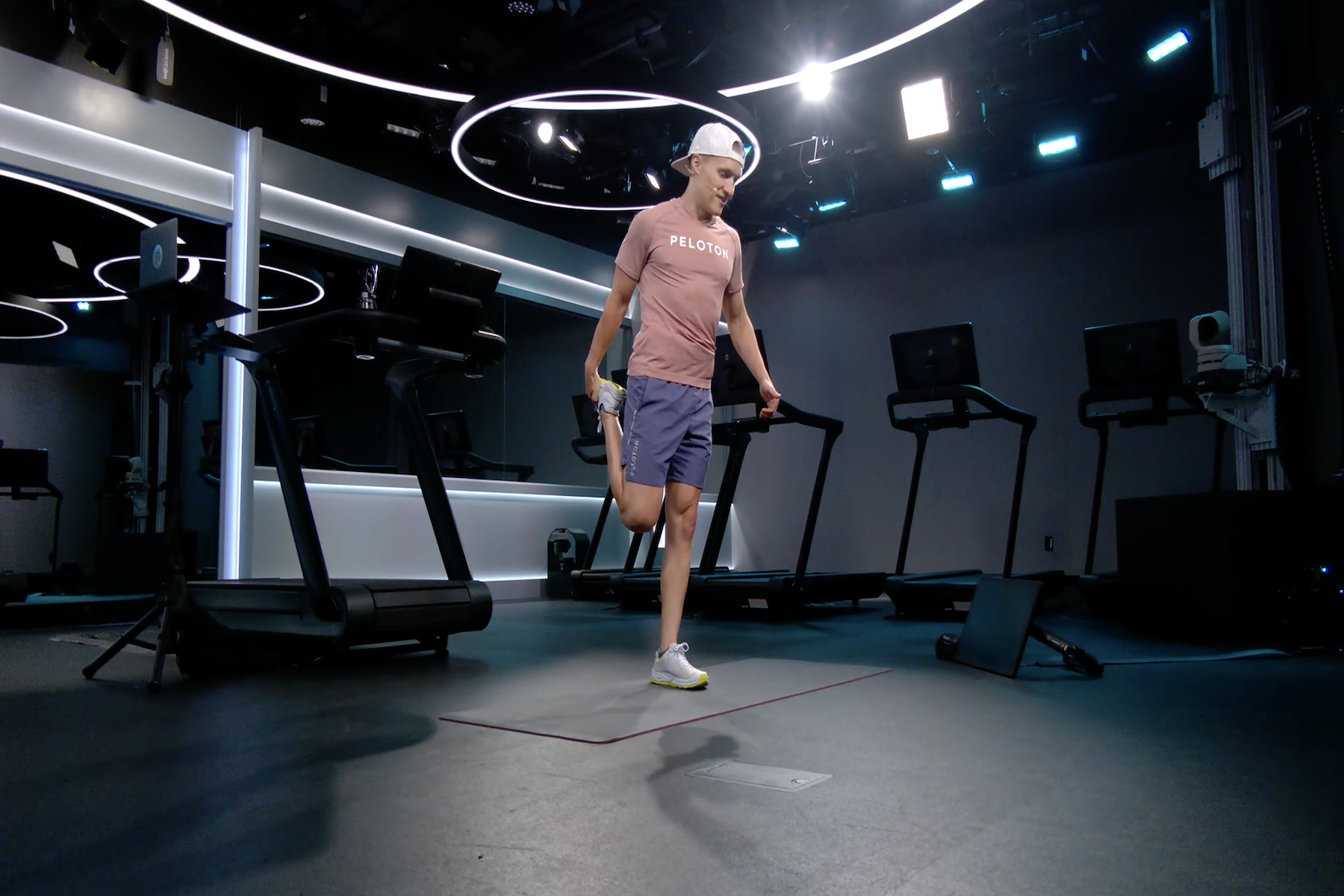
15 Stretches to Do Daily to Boost Flexibility and Limber Up
Plus experts share the benefits of adding stretching to your daily routine.
By Angelica Wilson•
Benefits of Daily Stretching
15 Full Body Stretches to Do Every Day
Safety Concerns for Daily Stretching
What’s the Best Way to Add Stretching to Your Routine?
Stretching is more than a pre- or post-workout ritual. It’s a practice that should be done on a daily basis—regardless of whether or not you’ve worked out that day. “Incorporating a daily stretching routine can offer a variety of benefits for both your physical and mental well-being,”says Peloton instructor, Logan Aldridge. Over time, a daily stretching routine will increase your flexibility along with improving your posture and overall athletic performance.
However, you shouldn’t dive into a daily stretching routine if you have a medical condition or recent injury that prevents you from doing so. “If you have had a recent injury such as a muscle strain, a joint sprain, have had surgery, or a recent fracture, you will want to check with your healthcare provider or physical therapist to ensure that [a daily stretching routine] is safe to do,” licensed orthopedic and pelvic health physical therapist, Kasia Gondek explains.
Benefits of Daily Stretching
Logan says that there are several major benefits to stretching. The first, and most well-known, benefit is improved flexibility through an increased range of motion. Another benefit to a daily stretching routine is an improvement in your posture. Stretching certain parts of the body targets muscles and joints that are often tight from long amounts of sitting or standing.
Regular stretching also alleviates muscle tightness and tension while increasing blood flow. The increase in blood flow helps improve circulation and nutrient delivery to your muscle tissue, according to Logan.
“Flexible muscles are more efficient and responsive, which can enhance your athletic performance in various activities,” Logan explains. Plus, he adds that as you are maintaining your daily stretching routine, you are actively reducing the risk of injury to your muscles and joints. “Flexible muscles are less prone to strains and sprains,” he notes.
How Long Should You Stretch For?
Gondek says that “the best stretching routine is one that you will do.” That means, fitting in as many stretches as feels right to you on a given day. Ideally, try to stretch each of the major muscle groups in your body at least once during your daily stretching routine.
Gondek generally recommends holding individual stretches for 15 to 30 seconds for anywhere from one to four reps. “Older adults need more than 30 second hold times, up to 45 seconds,” she elaborates.
Should You Change Your Stretch Routine If You Workout?
Stretching is important to do regardless of your current status with working out. While there are a number of stretches that you can do on a daily basis, if you workout, you can tailor your daily stretching routine to your particular workout. “For people who workout regularly, a daily stretching routine also helps to prevent injury and can improve athletic performance,” Gondek notes. Stretching ensures that your muscles and joints have the optimal range needed to generate force and power, says Gondek.
As you stretch for your workouts, spend a bit more time on areas of the body that will be, or have been, worked on. But, don’t forget to give the other areas of your body a light stretch too.
For example, if you’re doing an upper body workout, add in more upper body stretches while also giving your lower body and core a bit of a stretch. Even though you aren’t targeting those areas, they are still working to support your upper body in its exercises.
15 Full Body Stretches to Do Every Day
Both Logan, and Gondek suggest using a number of stretches to help you improve your overall posture and athletic performance. As you start to incorporate more exercises into your daily stretching routine, the experts have a couple reminders to keep in mind.
“A stretch should feel like a moderate to low intensity pulling sensation in the muscle being stretched,” Gondek explains. That said, both experts recommend stopping the stretch if you feel any pain or sharp sensations. “Remember to perform stretches slowly and smoothly, without bouncing, to avoid injury,” Logan adds.

Cat Cow
1. Kneel with hands and knees on the ground. Hands under shoulders and knees under hips.
2. On a long breath in, lift the chin, chest, and seat upwards.
3. On a long breath out, tuck the chin and tail under while doming in the spine.
4. Alternate for 15 to 30 seconds.

Kneeling Hip Flexor Stretch
1. Kneel on your right knee with your left foot in front, forming a 90-degree angle.
2. Gently push your hips forward, feeling the stretch in the front of your right hip.
3. Hold for 15 to 30 seconds, then switch sides.
Kneeling Wrist Stretch
1. Kneel with hands and knees on the ground. All fingers point forward.
2. Turn one hand to the side with fingertips pointing away from the center of the body.
3. Lean the body towards the direction of the fingertips.
4. Hold for 15 to 30 seconds, then switch sides.
Tip: For a more intense stretch, turn the hand 180 degrees with fingertips pointing toward the same side thigh instead of sideways.
Neck Stretch
1.Sit or stand up tall.
2.Gently tilt your head to one side, bringing your ear toward your shoulder.
3.Hold for 15 to 30 seconds, then switch sides.
Reclined Hamstring Stretch With Strap
1. Lay on your back, legs straight, with a stretching strap or yoga strap looped around one foot.
2. Hold on to the free end of the strap and bring the leg up toward the ceiling until you feel a low to moderate intensity stretch. Keep the knee as straight as possible.
3. Hold for 30 to 60 seconds, then switch sides.
Single Knee to Chest
1. Stand up tall or lay down.
2. Keeping one leg straight, use the abdomen to bring the opposite knee towards the chest.
3. Interlace your fingers around the shin just below the knee.
4. Hold for 15 to 30 seconds, then switch sides.

Seated Figure Four Stretch
1. Find a comfortable seated position in a chair with your feet touching the floor, sitting with your back straight.
2. Created a figure four shape with the opposite leg.
3. If you feel a stretch here, hold for 30 to 60 seconds before switching sides.
4. If you do not feel a stretch here, gently and slowly lean your trunk forward toward the legs until you feel a low to moderate stretch behind the hip.
5. Hold for 30 to 60 seconds, then switch sides.
Seated Trunk Twist
1. Sit or stand, with your back straight.
2. Reach the arms overhead.
3. From the waist, rotate to one side while reaching the arms in opposite directions in line with the shoulders.
4. Hold for 15 to 30 seconds, then switch sides.
Shoulder Blade Stretch
1. Sit or stand up tall.
2. Bring your right arm across your chest.
3. Use your left hand to gently pull your right arm closer to your chest.
4. Hold for 15 to 30 seconds, then switch sides.
Side Stretch
1. Sit or stand up tall.
2. Reach one arm overhead.
3. Lean towards the arm that is not raised by bending sideways at the waist.
4. Hold for 15 to 30 seconds, then switch sides.
Standing Calf Stretch
1. Stand facing a wall with one foot forward and one foot back.
2. Keep your back leg straight, and both feet flat, then bend your front knee, leaning toward the wall to stretch your calf muscles.
3. Hold for 15 to 30 seconds, then switch sides.
Tip: Create more distance between your feet to increase the stretch.
Standing Chest Opener
1. Clasp your hands behind your back and straighten your arms.
2. Lift your arms slightly, opening your chest and squeezing your shoulder blades together.
3. Hold for 15 to 30 seconds, then switch the interlacing of the hands, and repeat.
Standing Doorway Pectoral Stretch
1. Find a stagger stance, with one leg in front, one leg behind.
2. Bring the right arm up to shoulder height and place the palm and inside of the arm on the wall surface or doorway. Your arm should look like a goal post.
3. Gently lean into the stretch through the open space to feel the stretch along the front of the chest. Be sure to keep your shoulder down away from the ears.
4. Move the arm higher or lower to stretch various aspects of the muscle.
5. Hold for 30 to 60 seconds, then switch sides.
Standing Forward Fold
1. Stand with your feet hip-width apart and slowly bend forward at both the waist and hips to reach towards your toes.
2. Hold for 15 to 30 seconds.

Standing Quadricep Stretch
1. Stand up straight next to a wall for balance. Place one hand on the wall.
2. Bend the knee farthest from the wall to grab the foot with the same side hand.
3. Pull the foot towards the glutes while keeping your pelvis in a neutral position (your back should not be arched).
4. Hold for 30 to 60 seconds, then switch sides.
Safety Concerns for Daily Stretching
Although stretching has a number of benefits, you can overdo it. For starters, here’s how stretching works. “Muscles and tendons have a protective reflex at the end of the muscle-tendon range that reflexively contracts the muscle group being stretched to prevent overstretching,” Gondek says.
So, by building a stretching routine, you’re essentially “desensitizing” your muscles to the sensation of stretching, according to Gondek. “There is no actual change to the muscle itself, but rather your body senses that it’s comfortable to stretch further as you continue to hold the stretch for a longer period of time,” she explains.
When you overdo things, you’re overstretching. “Overstretching can occur when you move beyond the muscle and tendon flexibility limits or hold the stretch for too long,” she says. Additionally, the physical therapist warns to avoid bouncing at the end of your range. “[Bouncing] can place excess strain on the tendon of the muscle and can lead to a muscle strain,” she states.
In order to avoid overstretching, move slowly while going in and coming out of your stretches. Also, ease up on a stretch if you come across any painful or sharp sensations. You don’t want to stay in a painful position. However, you could feel a dull pull, or the release of "stickiness", during your stretches.
What’s the Best Way to Add Stretching to Your Routine?
One of the best aspects of a daily stretching routine is that you don’t have to do it all at once. As Gondek previously mentioned, it’s important that your routine is one you’ll actually stick to. So, if breaking it up throughout the day makes it more achievable for you, then do it.
On the other hand, if you’d rather stretch all at once, Gondek suggests stretching at night before bed. “In the evening before bed is a good time to stretch to improve sleep and ease aching muscles and joints,” the physical therapist explains.
Morning
There’s a high chance that you’re already stretching in the morning and don’t even realize it. From the moment you turn off your alarm, you probably interlace your hands and stretch your arms overhead.
Want more? After your initial stretch in bed, sit on the edge of your bed to add “Neck Stretch” and “Side Stretch” from the list above before making your morning beverage. You can even do a “Standing Forward Fold” while you wait for the water to boil for your coffee or tea.
At Work
Whether you’re at the office, or working from home, you can tick a majority of the seated stretches off of your list. However, if your job requires you to stand for most of the time, you can do a series of standing stretches instead. Gondek also mentions that stretching every couple of hours throughout the working day can help with tension in the neck, back, hips, and legs.
Evening
At night, you have a couple options for finishing your daily stretching routine. Firstly, you can stretch the areas of your body that you weren’t able to get to earlier in the day. Or, you can do a total body stretch where you get to your neck, arms, torso, hips, and legs.
This content is for informational and educational purposes only and does not constitute individualized advice. It is not intended to replace professional medical evaluation, diagnosis, or treatment. Seek the advice of your physician for questions you may have regarding your health or a medical condition. If you are having a medical emergency, call your physician or 911 immediately.
Level up your inbox.
Subscribe for a weekly dose of fitness, plus the latest promos, launches, and events.
By providing your email address, you agree to receive marketing communications from Peloton.
For more about how we use your information, see our Privacy Policy.





